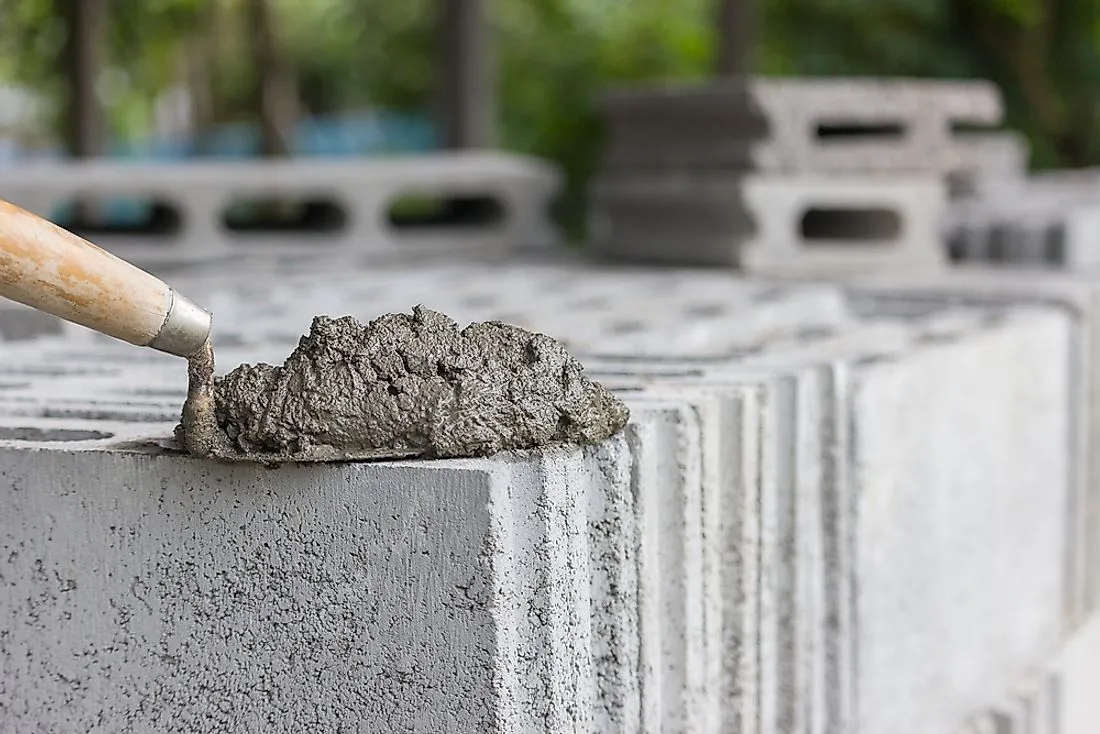
Cement is a binding agent that is used to hold materials together. It is typically made from a mixture of limestone, clay, and other minerals, and it is used to create concrete, which is a strong and durable building material. Cement is also used in mortar, which is a mixture of cement, sand, and water that is used to hold bricks, stones, and other building materials together.
Cement is made by heating limestone, clay, and other minerals in a kiln to a high temperature, which causes them to break down and form a hard, binding substance. This substance is then ground into a fine powder and mixed with water to create a paste that can be used to bind materials together.
Types of Cement
- Portland: This is the most common type of cement and is made from a mixture of limestone, clay, and other minerals. It is named after the Isle of Portland in England, where it was first developed in the 19th century.
- Masonry: This type of cement is used specifically for bricklaying and stone masonry. It has a higher proportion of silica and alumina than Portland cement, which makes it more suitable for binding bricks and stones together.
- Oil-well: This type of cement is used in the production of oil and natural gas. It is designed to withstand the high temperatures and pressures found in oil wells, and it is used to seal the wells and prevent leaks.
- White: This type of cement is made from a mixture of limestone, clay, and other minerals that are burned at a lower temperature than Portland cement. It is used to create decorative concrete and mortar, and it has a whiter color than Portland cement.
Overall, cement is an essential building material that is used in a wide range of construction projects, from roads and bridges to buildings and homes. It is a versatile and durable substance that can be mixed with water to create a strong and binding paste that can hold materials together for many years.
What is it?
At its core, cement is a binder, an ingredient used in construction to join other materials, most notably sand and gravel, into a solid mass. It's not the final product you see in sidewalks or buildings, but a crucial component that enables those structures to stand strong.
How's it made?
Cement production involves heating a mixture of limestone, clay, and other minerals to intense temperatures (around 1450°C). This chemical transformation, called clinkering, creates a hard, clumpy material. This clinker is then ground into a fine powder, the familiar grey cement we're used to.
What makes it special?
Cement's magic lies in its hydration properties. When mixed with water, cement particles release chemical compounds that react with water molecules, forming a strong, interlocking network of crystals. This process, called setting, is what binds sand and gravel together into concrete.
Beyond the basics:
- The concrete connection: While cement is the glue, it's sand and gravel (collectively called aggregate) that form the bulk of concrete. The ratio of cement to aggregate affects the final strength and properties of the concrete.
- Sustainability concerns: Cement production is a significant contributor to carbon emissions. Research is ongoing to develop more sustainable and eco-friendly cements.
- Hidden history: The word "cement" comes from the Latin "caementum," meaning "cut stone." Roman cement, made from volcanic ash, played a crucial role in their architectural masterpieces.
History of Cement
Cement, the unassuming grey powder binding our world together, holds a history as remarkable as the structures it builds. Let's embark on a journey through time, tracing the footsteps of this essential material:
Ancient Foundations (Before 500 BC):
- Early Glimmers: While not quite true cement, the earliest use of binding materials dates back to ancient civilizations. Egyptians employed mudbricks and gypsum mortar, while Mesopotamian builders utilized burnt lime for construction.
- Roman Innovation: The Romans made a pioneering leap with opus caementicium, a concrete-like mixture of volcanic ash, lime, and crushed rock. This durable material, evident in their iconic structures like the Colosseum and Pantheon, laid the groundwork for future developments.
Medieval Evolution (500 - 1500 AD):
- Lost and Found: After the fall of the Roman Empire, the secrets of opus caementicium faded for centuries. Builders reverted to simpler materials like clay and brick.
- Rediscovery and Refinement: By the Middle Ages, interest in hydraulic binders rekindled. Lime-based mortars saw widespread use in Europe, while in India and China, advancements in lime and clay mixtures fueled construction activity.
Modern Leap (18th - 20th Centuries):
- The Portland Revolution: In 1824, Joseph Aspdin, a British bricklayer, patented a new type of cement he called "Portland cement," named after its resemblance to the Isle of Portland stone. This innovation marked a turning point, offering superior strength and versatility.
- Industrial Boom: The 19th and 20th centuries saw the rise of the cement industry. Technological advancements like rotary kilns and improved production methods made cement readily available and affordable, fueling a global construction boom.
- Evolution Continues: Cement continues to evolve with the development of new formulas and additives. Research focuses on enhancing strength, durability, and reducing environmental impact.
Looking Ahead:
- Sustainability Challenges: Cement production emits a significant amount of carbon dioxide, posing environmental concerns. Sustainable alternatives like geopolymers and recycled materials are being explored.
- Technological Frontiers: Research continues on smart cements with self-healing properties or sensors for monitoring structural integrity.